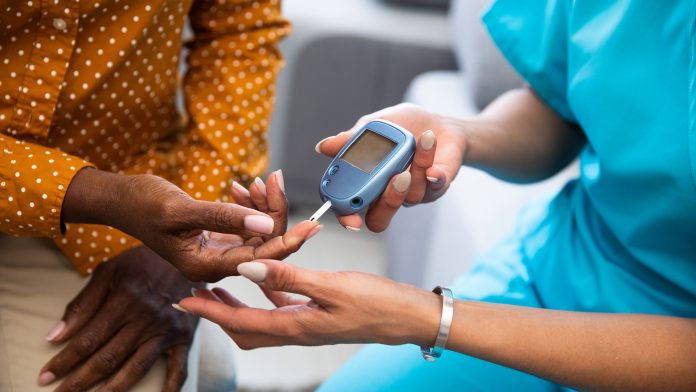
A new study suggests that population screening could be a useful tool to discover undiagnosed type 2 diabetes cases.
A standard diabetes test could be employed to screen all UK adults aged 40-70 years to find undiagnosed type 2 diabetes cases more than two years earlier, helping people begin their treatment at an earlier stage.
Type 2 diabetes goes undiagnosed for many years as a result of the gradual development of high blood sugar. It is a common condition that causes glucose in the blood to become too high and leads to excessive thirst, tiredness, and increased urination.
The study is published in Diabetologia and was led by a team from the University of Exeter.
Researching the impact of population on undiagnosed type 2 diabetes
This study is the first to use real-world clinical data from the UK Biobank to determine the effect of population screening on diabetes diagnoses. The researchers believe that finding undiagnosed type 2 diabetes cases earlier could be even higher than what their study suggests, since the UK Biobank population are healthier than the general population, and ethnic minorities are underrepresented in the cohort.
The researchers studied participants aged 40-70 years who had their HbA1c (glycated haemoglobin) measured at enrolment. HbA1c reflects a person’s blood sugar control over the past two to three months and is more widely used than the oral glucose tolerance test. HbA1c is expressed as an absolute value (mmol/mol) or as a percentage, with a cut-off of 48 mmol/mol or higher (6.5% or higher) usually used to diagnose diabetes.
The results were not fed back to either the participants or their doctors. The researchers also analysed 179,923 participants with linked healthcare data and identified those with pre-existing diabetes diagnoses (7.3%). Of the remaining participants, 1% had undiagnosed type 2 diabetes. These participants added an extra 13% of cases to the 13,077 participants with a diabetes diagnosis.
The results suggest that up to 250,000 adults in the 40-70-year-old age group could have undiagnosed diabetes, detected by the HbA1c-based screening. This number is likely to be underestimated. Data from Diabetes UK illuminates that 850,000 people are living with undiagnosed diabetes in the UK.
Improving the time scale for the diagnosis
The median time to clinically diagnose undiagnosed type 2 diabetes was 2.2 years. The median HbA1c at the clinical diagnosis stage was 58.2 mmol/mol (7.5%). At the ten-year follow-up, 88% of those 1,703 undiagnosed type 2 diabetes cases had received a clinical diagnosis.
Female participants with lower HbA1c and BMI measurements at enrolment experienced the longest delay to clinical diagnosis. This indicates that clinicians are more likely to screen men or individuals with obesity and less likely to screen women with a BMI below the obese range.
The known link between non-white ethnicity and higher social deprivation and increased risk of diabetes also suggests a higher prevalence of undiagnosed type 2 diabetes in this group in the wider population, likely to be higher than in the UK Biobank cohort.
The researchers noted that increases in opportunistic diabetes testing during and after the study period may mean that any screening initiative implemented would provide less substantial benefits than the 2.2-year improvement in the study. However, key issues such as the COVID-19 pandemic impeded diabetes testing and delays in diagnosis.
The authors concluded: “Our study provides the first population-based estimate of the impact of HbA1c-based screening on reducing the time to a diabetes diagnosis. In UK Biobank, 1.0% of those aged 40–70 years had undiagnosed diabetes, and population-level HbA1c screening could have reduced the time to a diabetes diagnosis in this group by a median of 2.2 years. Earlier diagnosis would allow earlier intervention with the potential to reduce the risk of diabetes complications, but this requires further evaluation.”






















